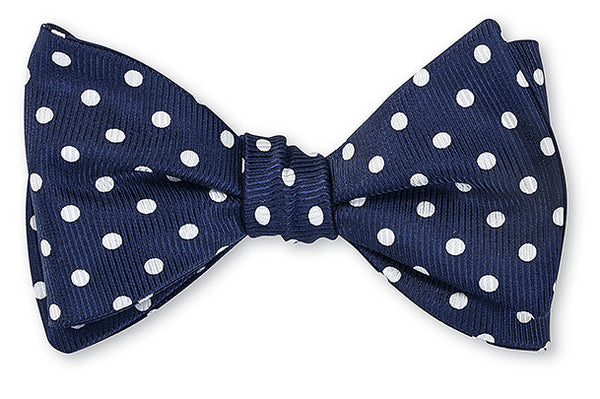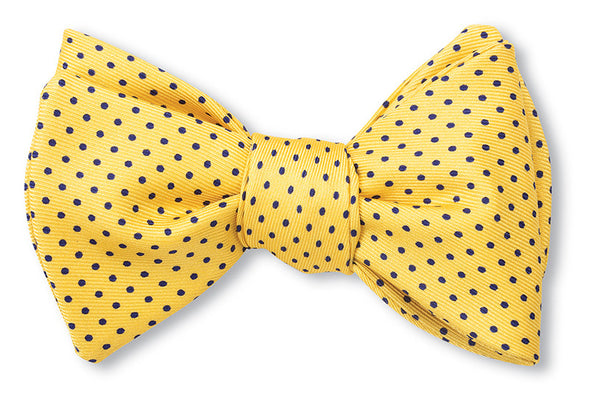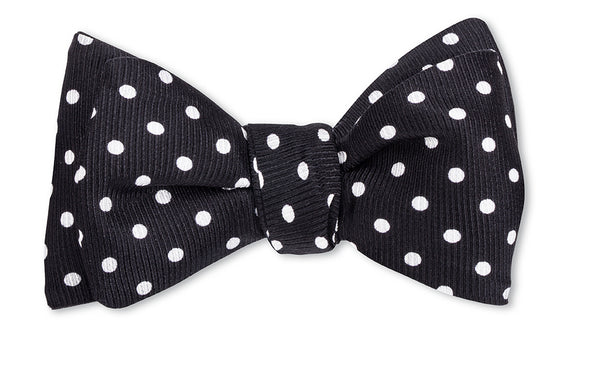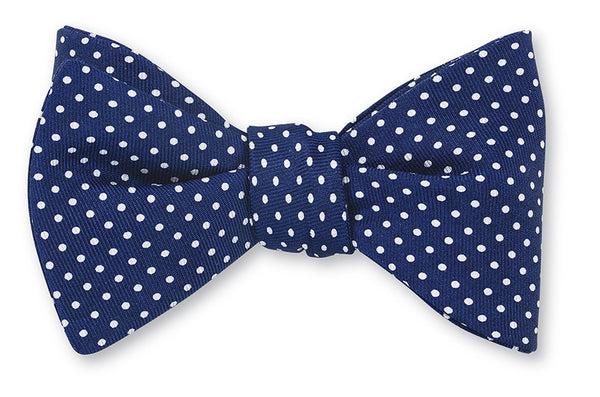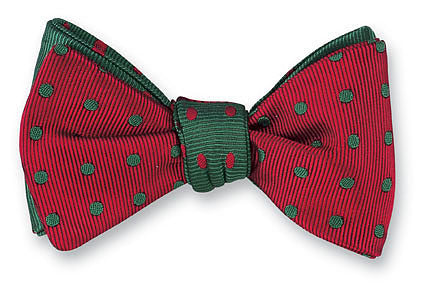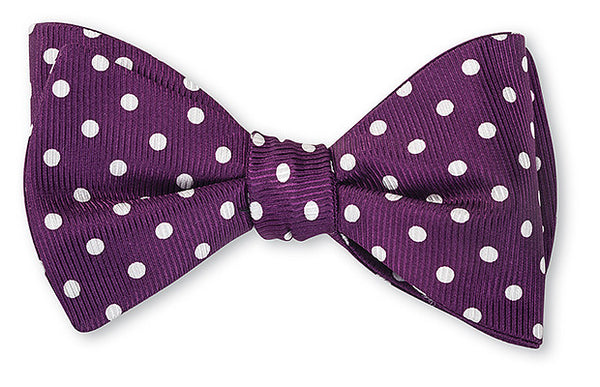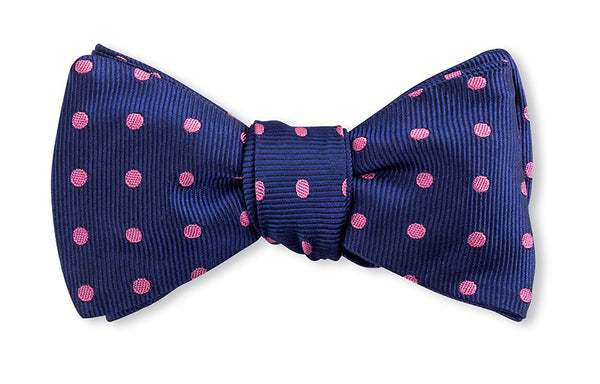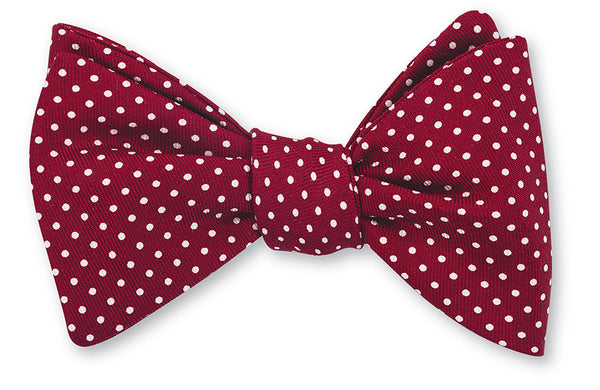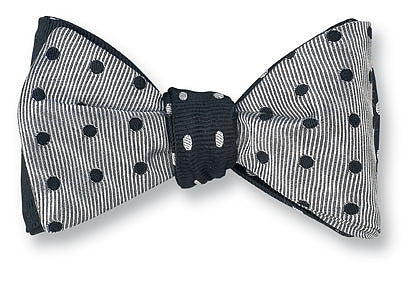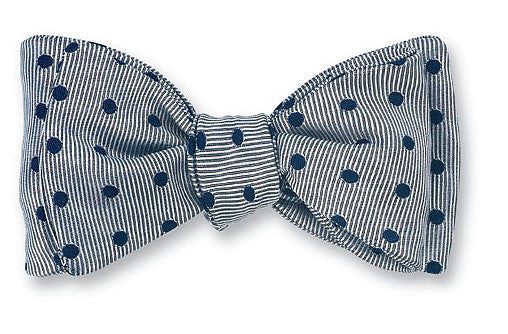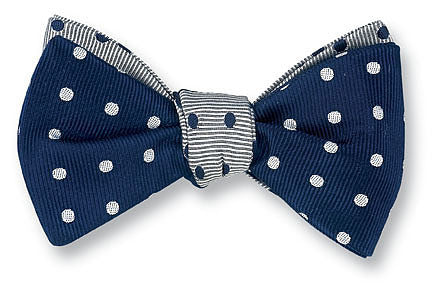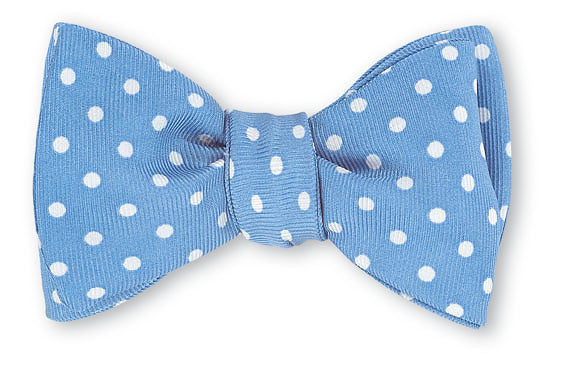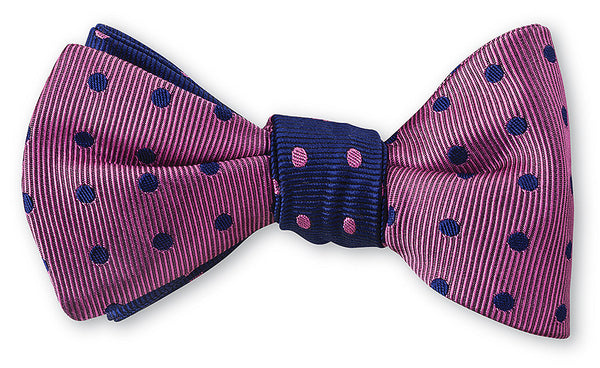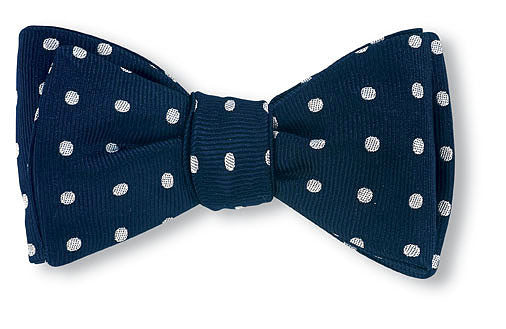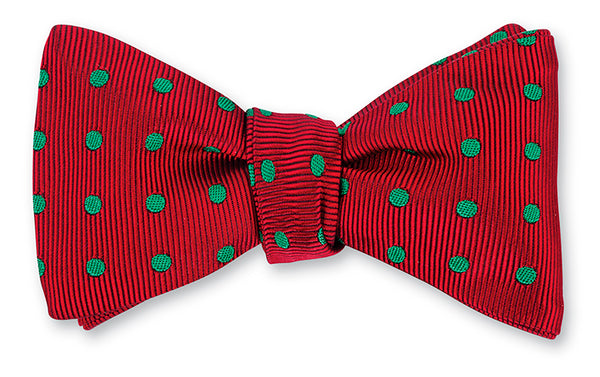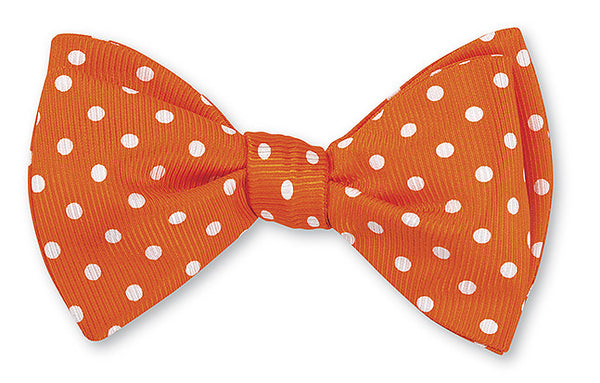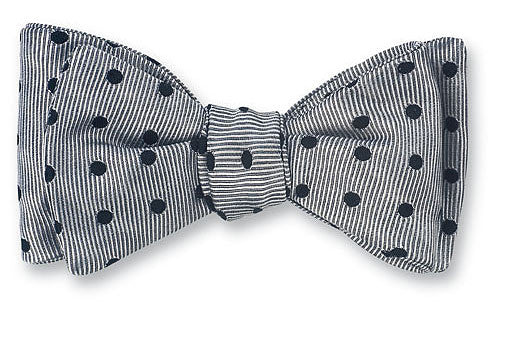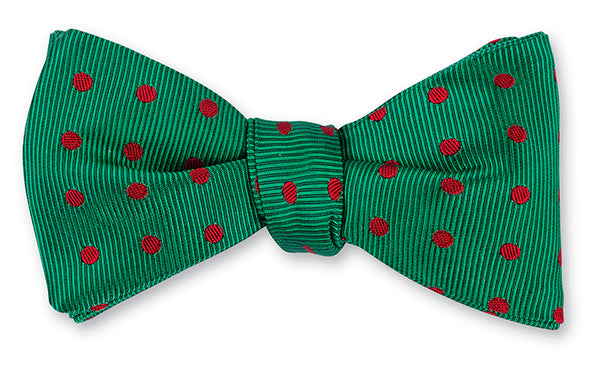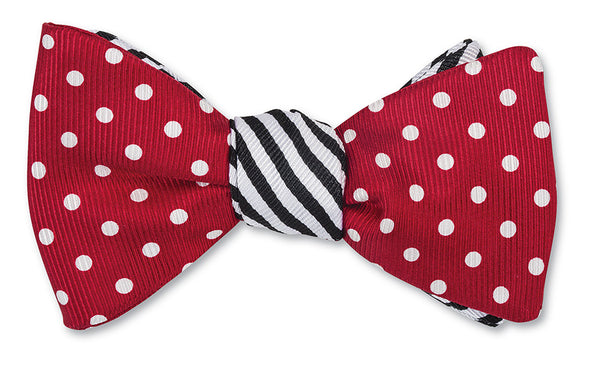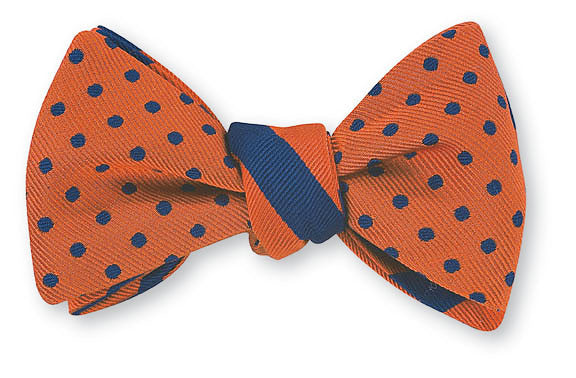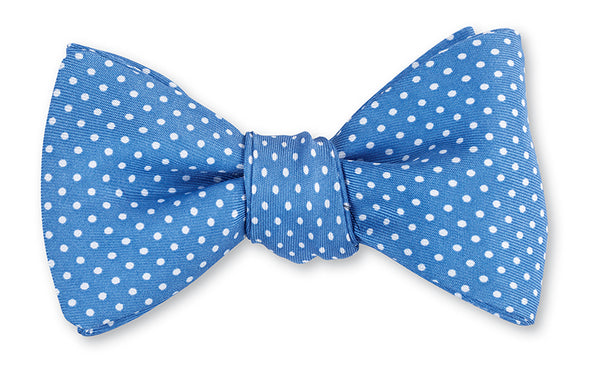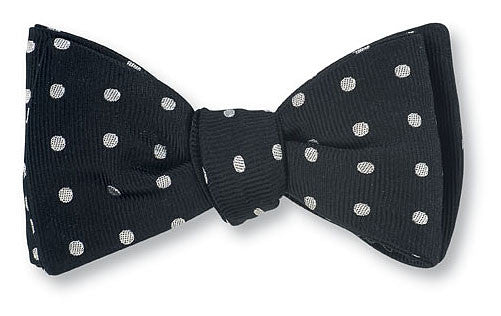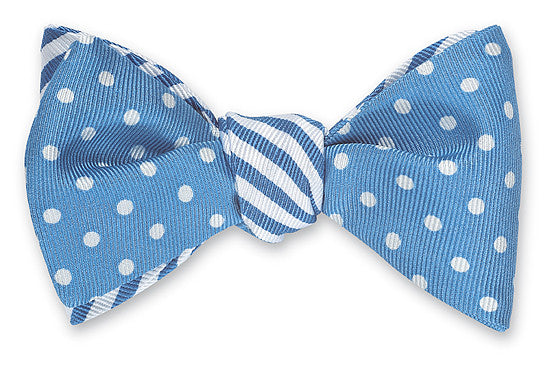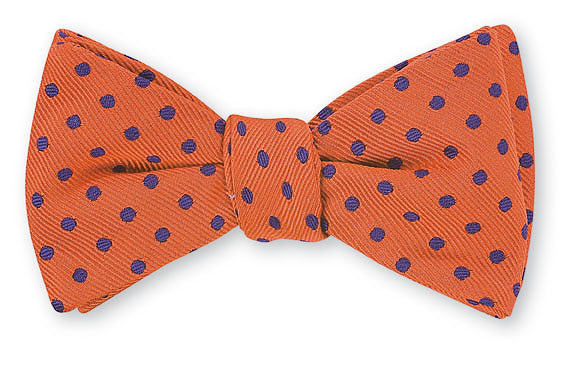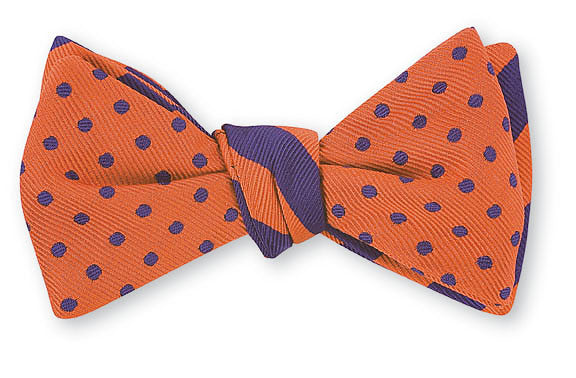Polka Dot Bow Ties
As one of the most popular and iconic style patterns, polka dots add a unique touch to every outfit. Winston Churchill was known as the most famous bow tie wearer of the past century - and he often chose to sport polka dot bow ties.
With its simplistic design and countless color combinations, a polka dot bow tie is guaranteed to give a great impression to a gentleman's every encounter. Don't forget to pair it with polka dot pocket squares or cummerbunds - or choose from an array of polka dot ties and ascots.
Shop R. Hanauer’s collection below:
The R. Hanauer Process
Each individual R. Hanauer bow tie, necktie and cummerbund set is made by a talented team member in our shop in Fort Mill, SC. Our bow ties are made by hand and made to order. The specific types of silk, cotton, linen, and wool fabrics for our products are always carefully selected by our father-and-son team, Randy and Randall Hanauer. We feature English and Italian silk from renowned international mills in our collections and hand-make the bow ties with American craft and attention to detail. When the order process has begun, our ties are cut by hand on the table. As opposed to the straight of grain, our bow tie fabric is cut on a bias to produce the best-tying bow tie on the market. Cutting on the bias allows the pattern to be cut out at a 45-degree angle to produce the gentle stretch of the fabric for the ease of tying. A bias-cut lining is in each and every one of our bow ties to ensure that the structure and shape will always remain in its best condition. We are proud and dedicated to making American made bow ties in our hometown of Fort Mill, South Carolina.
History of the Polka Dot Pattern
The appearance of the unique pattern that we now consider “polka dot” dates back hundreds of years ago, before it was even significant enough to have been given the official name as we know it now. Across the world and depending on the region, the design was first referred to by different names such as “dotted-swiss”, the French “quinconce”, and the German “Thalertupfen.” It is speculated that the name was properly given to the pattern because of its association with the “polka dance.” Like the dance, the printed pattern encompassed the same pattern of short bursts of energy. On an interesting note, polka dots as a fabric pattern didn’t exist until the mid-19th century, because the dots could not be evenly-spaced on the fabric without machines.
The polka dot pattern was primarily being represented by women, giving off a sense of innocence and fragility. This is likely because the term “polka” derives from Poland in a word that essentially means “Polish woman” and “little woman or girl” in other translations. In pop culture, the polka dot began to make its mark in the art world around the years of 1865-1870. Some of the more infamous paintings include Frédéric Bazille’s “Family Reunion” which released in 1867. In the image, both young girls in the family portrait wear white frocks with blue dots and ribbons. Later in 1869, Berthe Morisot premiered her painting entitled “The Sisters” where the subjects are dressed in identical white polka dot outfits. White and blue polka dots during this decade was the typical choice, as variation in the colors in the pattern did not come until later.
A variation of the pattern worn by men was noticed throughout Europe in the early 1900s when people such as Winston Churchill would sport the iconic polka dot bow tie. Churchill was known to have an eccentric and recognizable sense of fashion. He stated that he originally began wearing bow ties and eventually his signature neckwear because he was paying tribute to his father who had a similar taste in fashion.
Polka-Dotted Craze in America
The polka dot pattern has been made quite versatile in the fashion world over the last century. Nearly one hundred years after its original debut, polka dots were becoming more universally accepted, specifically in America, by men in an overall casual fashion sense such as shirts and scarves. This could be thanks to many things, but most importantly the illustration of the pattern through more powerful leaders. In 1962, DC comics birthed a new hero, “The Polka-Dot Man.” He would actually utilize the print to take down his enemies. Having a strong male figure in power wearing light colors in a polka dotted suit allowed for a shift in social norms in that time period.
Once the craze started up surrounding the polka dot design, many gentlemen in the public eye began to show off the unique pattern, which eventually caused a wave to a more open-minded society through fashion. From the 1940s stretching to the 1970s, musical icons such as Frank Sinatra and Bob Dylan made a universal statement of the polka dot pattern by their art as well as their own wardrobes. As declared by the modern fashion icon Marc Jacobs, “There is never a wrong time for a polka dot.”
Jazz up an average outfit or suit by adding a handmade polka-dot bow tie. Each gentleman should pride himself in knowing that he has a unique, and above all, powerful sense of style. Choosing the polka-dot bow tie can add a fun, yet fresh approach on the formal dress code. At R. Hanauer, we strive to make every gentleman stand out by showcasing custom made ties and accessories to ensure that they make a lasting impression and are unforgettable at any given occasion.

